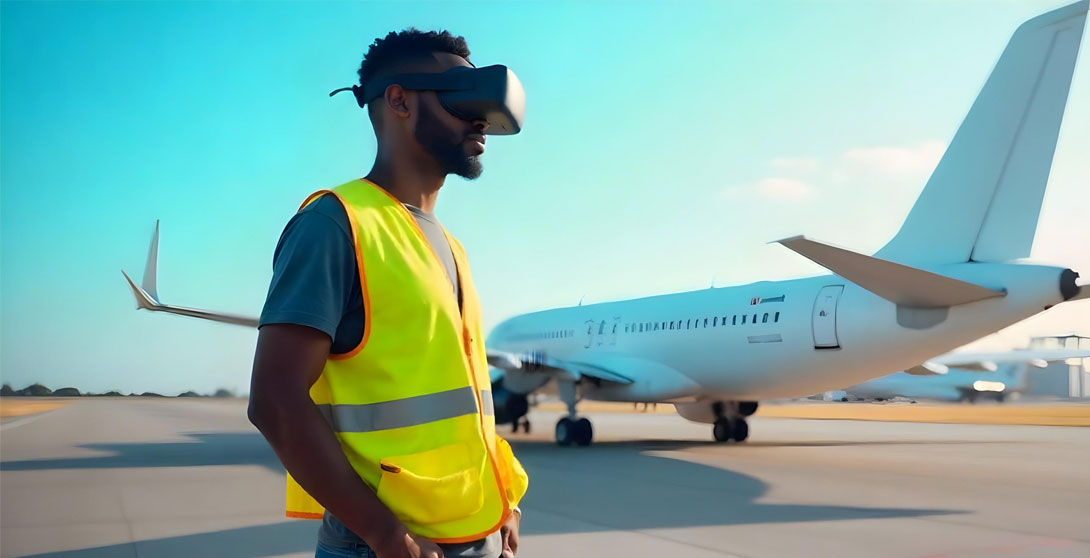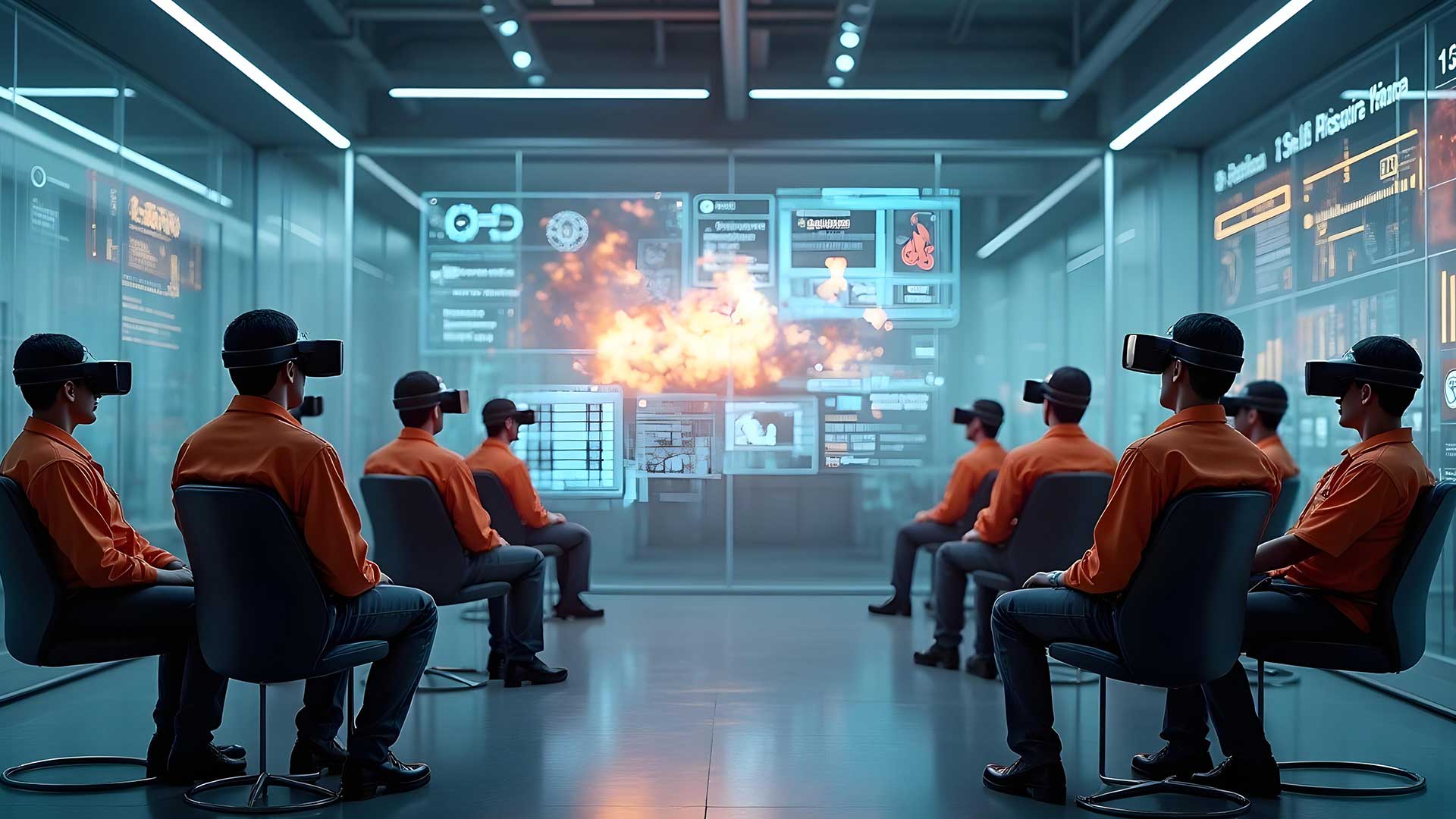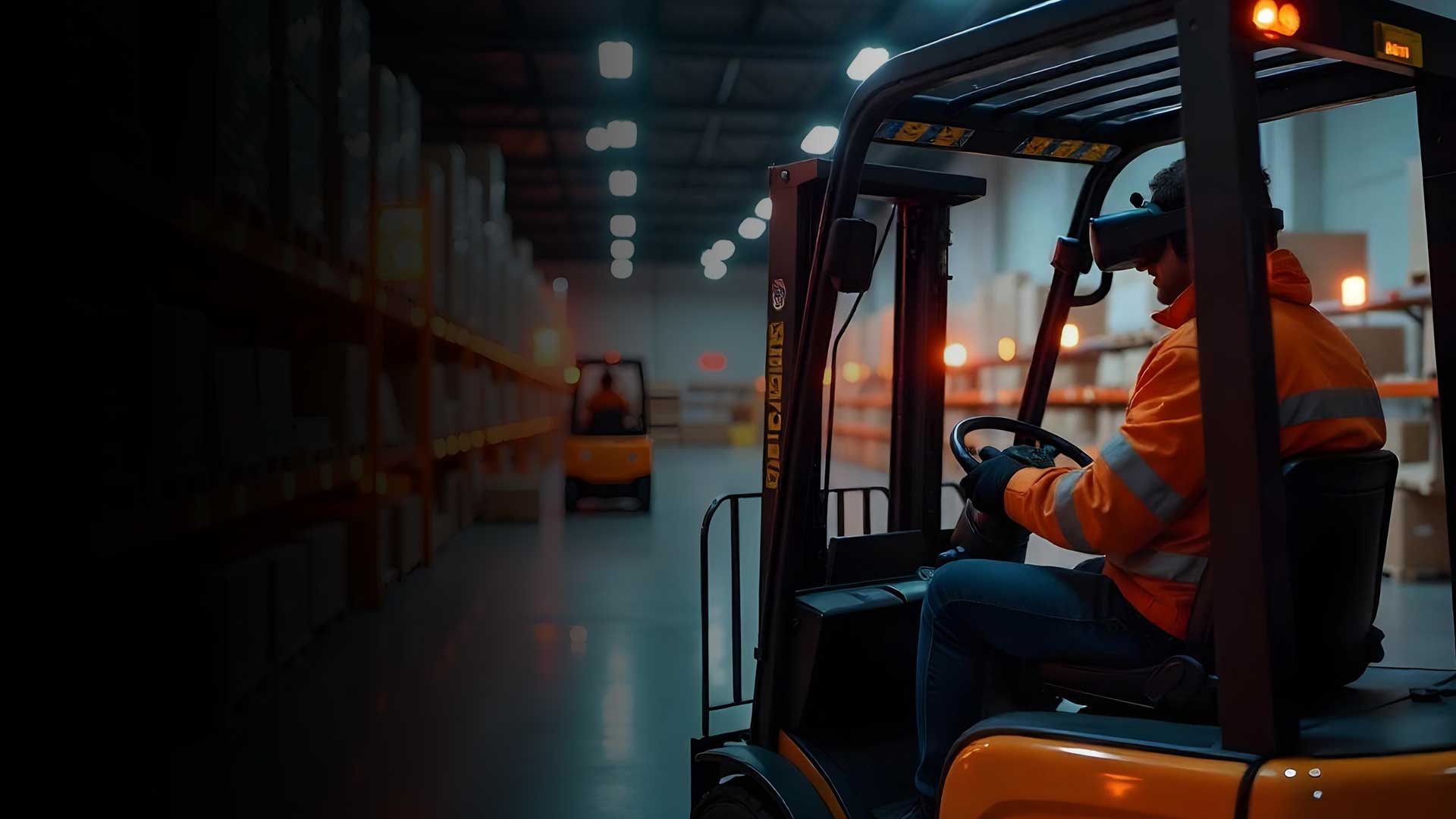Jet Bridge Operator Training is crucial for ensuring safe and efficient airport operations. VR training offers a risk-free, immersive experience to help operators master procedures without real-world hazards. Airlines benefit from reduced errors, enhanced safety, and faster onboarding. This latest guide explores how Jet Bridge VR Training is revolutionising airlines’ ground handling.
Enhancing Airport Efficiency: The Need for Jet Bridge VR Training for Operators
Airports handle thousands of flights daily, and even a minor error in jet bridge operations can lead to costly delays or safety hazards. Human errors play a significant role in ground handling accidents, emphasizing the importance of proper training. However, traditional training methods often fall short by not incorporating realistic simulations, which can limit practical, hands-on experience.
This is where Jet Bridge immersive training for operators becomes a game-changer. VR-based training provides a risk-free environment where operators can practice docking, undocking, and troubleshooting scenarios with 95% better knowledge retention than traditional methods. Additionally, VR training reduces training time by up to 40% while improving operational efficiency.
For airlines, investing in VR-based jet bridge training means fewer damages to aircraft, reduced downtime, and enhanced passenger safety. As airlines continue to embrace technology, integrating VR training ensures that jet bridge operators are well-prepared for real-world challenges, ultimately leading to a more efficient and safe ground-handling process.
Complexities Involved in the Job of Jet Bridge Operator
Operating a jet bridge is far from a simple task. Jet bridge operators must navigate multiple challenges daily, including:
- Precision Docking: Connecting the jet bridge to the aircraft requires extreme accuracy to prevent damage to the aircraft and ensure passenger safety.
- Time Constraints: Operators must work under tight schedules to minimize delays while maintaining safety standards.
- Weather Conditions: Harsh weather conditions, such as heavy rain, snow, or high winds, can add complexity to the docking process.
- Emergency Situations: Operators must be prepared to handle unexpected mechanical failures or security-related incidents.
Given these challenges, effective training is crucial to ensuring operators can perform their duties with confidence and efficiency.

Limitations of Traditional Jet Bridge Training
Despite the importance of thorough training, traditional methods have several shortcomings that impact their effectiveness.
1. Shortcomings of On-the-Job and Classroom Training
Traditional jet bridge training typically involves a combination of:
- On-the-job training: New operators learn by shadowing experienced professionals, but hands-on opportunities are often limited.
- Classroom instruction: Theoretical knowledge is provided through lectures and manuals, which may not translate effectively into practical skills.
These methods lack interactive, hands-on practice, leading to gaps in learning and skill development.
2. Risks of Training on Real Equipment with Real Aircraft
Training on live equipment comes with significant risks:
- Potential damage to aircraft due to operator error.
- Increased safety hazards for trainees, experienced operators, and airport personnel.
- Limited training time, as jet bridges are in constant use at busy airports.
3. Difficulty Simulating Emergency Scenarios
Real-world emergencies, such as jet bridge malfunctions or sudden weather changes, are difficult to recreate in traditional training environments. Without hands-on practice in these scenarios, operators may struggle to respond effectively during actual emergencies.
Jet Bridge VR Training: A Game Changer
Virtual Reality (VR) technology is transforming jet bridge training, offering a safe, immersive, and cost-effective solution for Jet Bridge operators. With Jet Bridge VR Training, trainees can experience realistic scenarios without the risks associated with live training.
How VR Simulates Real-World Jet Bridge Operations
VR training replicates real-life jet bridge operations in a highly realistic virtual environment. Trainees use realistic controls to practice docking, adjusting, and retracting jet bridges, just as they would in actual operations.
Key features include:
- Fully immersive 3D environments that mimic real airport settings.
- Hands-on interaction with virtual jet bridge controls, mirroring real-life functionality.
- Real-time feedback on actions, helping trainees refine their skills.
By using VR, operators gain hands-on experience without the risks of live training.
Upgrade your team's preparedness for any situation with Juego neXR
Benefits of VR Training for Jet Bridge Operators
1. Improved Safety
One of the biggest advantages of VR training is that it allows operators to practice in a risk-free environment. Mistakes in training no longer pose threats to actual aircraft or personnel, significantly reducing accident rates.
2. Enhanced Skill Development
Repetitive practice is key to mastering jet bridge operations. VR enables operators to practice as many times as needed until they achieve proficiency. This results in greater skill refinement and faster learning curves compared to traditional methods.
3. Standardized Training for All Operators
Airlines often struggle with inconsistencies in operator training. Jet Bridge Operator VR Training ensures that every operator, regardless of location or previous experience, undergoes the same high-quality training program.
4. Improved Knowledge Retention
Studies show that immersive learning improves retention rates by up to 75% compared to traditional training methods (Source). Since VR training engages multiple senses, operators absorb and retain information more effectively.
Juego neXR: Transforming Jet Bridge Operations Training with Cutting-Edge XR Solutions
At Juego neXR, we specialize in delivering immersive XR solutions that revolutionize Jet Bridge Operator Training and airport operations. Our expertise in Extended Reality (XR), including Virtual Reality (VR) and Augmented Reality (AR), enables us to create highly realistic and interactive training environments that enhance operator proficiency. By simulating real-world scenarios, from routine docking to emergency handling, our solutions ensure hands-on learning without real-world risks.
Whether airlines seek Jet Bridge VR Training for new operators or advanced XR simulations for ongoing skill development, we provide scalable, cost-effective, and high-fidelity solutions. Our technology-driven approach enhances safety, reduces training costs, and improves efficiency, making Juego neXR the ideal partner for modernizing jet bridge operations.
Conclusion
Jet bridge operations are a critical aspect of airport efficiency, requiring well-trained personnel to ensure smooth aircraft boarding and disembarkation. Traditional training methods, while useful, have limitations that can impact operator preparedness.
Jet Bridge Operator VR Training is a revolutionary solution that enhances safety, improves knowledge retention, standardizes training, and builds operator confidence. With VR immersion learning experiences, realistic simulations, and hands-on practice, VR training is shaping the future of jet bridge operations.
Airlines looking to improve training outcomes and operational efficiency should explore VR-based jet bridge training solutions. By adopting this innovative approach, they can ensure highly skilled, confident, and safety-focused jet bridge operators, leading to seamless and secure airport operations.
Frequently Asked Questions
The cost of Jet Bridge VR Training varies based on factors like software complexity, customization, and hardware requirements. While the initial investment may be higher than traditional training, the long-term savings on equipment wear, operational risks, and training efficiency make it cost-effective. Juego neXR offers scalable and tailored VR training solutions, ensuring airlines get high-value, immersive learning experiences that enhance operator skills and safety without disrupting real-world operations.
VR training surpasses traditional methods by providing immersive, hands-on experience in a risk-free environment. It eliminates the dangers of real-world training while allowing operators to practice complex docking and emergency situations repeatedly. Juego neXR’s advanced VR simulations ensure standardized training, better knowledge retention, and real-time feedback, significantly improving operator proficiency and confidence. Additionally, VR reduces downtime and costs associated with using real jet bridges for training.
Jet Bridge VR Training is beneficial for new operators, experienced staff seeking refresher training, airlines, airport authorities, and ground handling companies looking to enhance operational efficiency and safety. Juego neXR provides tailored VR training programs that cater to diverse skill levels, ensuring operators are well-prepared to handle routine operations and emergency scenarios with precision. This training solution is also ideal for airlines aiming to standardize procedures and reduce human errors.
While VR training offers numerous benefits, challenges include the initial setup costs, the need for high-quality VR hardware, and the learning curve for first-time users. Some operators may also require additional hands-on training to complement virtual experiences. Juego neXR addresses these concerns by offering scalable, user-friendly solutions with realistic physics and intuitive controls, ensuring seamless adoption and effectiveness in real-world applications. Regular updates and support further enhance the training experience.
Juego neXR’s Jet Bridge VR Training can simulate a wide range of scenarios, including standard docking procedures, adverse weather conditions, mechanical failures, emergency evacuations, and troubleshooting malfunctions. Operators can also practice handling various aircraft types, ensuring adaptability in different real-world situations. These simulations offer hands-on learning without risks, improving operator confidence, efficiency, and safety while reducing operational downtime at airlines.
Revolutionize the future of business with Juego neXR
Table of Contents
- Enhancing Airport Efficiency: The Need for Jet Bridge VR Training for Operators
- Complexities Involved in the Job of Jet Bridge Operator
- Limitations of Traditional Jet Bridge Training
- How VR Simulates Real-World Jet Bridge Operations
- Benefits of VR Training for Jet Bridge Operators
- Juego neXR: Transforming Jet Bridge Operations Training with Cutting-Edge XR Solutions
- Conclusion
- Frequently Asked Questions
Related Posts
Share this Article:
Our Offices

India
Bangalore
GR Grand Plaza, 2nd Floor, JP Nagar, 6th Phase, Bangalore – 560 078

KSA
Jeddah
St Idris Square, 4036 Helmi Koutbi, Al Zahra, Jeddah 23425, Saudi Arabia
Follow Us On:
© 2025 Juego neXR. All Rights Reserved.




